Taking it Slow in Luang Prabang
The last time I rode a bicycle was in 2009 on Niijima Island. Before that, I was probably ten years old. Immediately after checking into the Belle Rive in Luang Prabang, my friends asked to use the hotel bicycles. Although mounting and dismounting was awkward and far from elegant, there was the familiar freedom and intimacy about getting to know a place by bicycle.
The moment I landed in Luang Prabang I was lulled into contentment by the unhurried pace, the colonial architecture, the muddy Mekong, and the lush tropical trees. A World Heritage city, the small town is filled with ancient temples, French patisseries and Asian-fusion eateries. I was in Luang Prabang for five days and spent the majority of my time biking between the sites, my hotel and places to eat. After traveling for almost two weeks in Southeast Asia, I relished the simplicity of the sleepy town and enjoyed moments of doing absolutely nothing.
Night Market
On our first night we visited the night market in the center of town. The market opens at around 5 p.m., and if you are riding your bike, you’ll need to lock it somewhere outside the market since it takes up and blocks the main road. Similarly to most markets in Thailand, you can find scarves, knick-knacks and touristy souvenirs.
After bargaining and haggling, we walked through the red-tented entrance and wandered deeper into the market. Eventually, we found dinner inside. There are a number of food stalls inside where you can pay approximately ¥300 for a large plate of food: a mix of stir fried vegetables, deep fried meats, rice and noodles you select yourself. Young European backpackers take advantage of the large quantity of food for the inexpensive price, and as a result, the atmosphere is grungy, rowdy and induced with Beerlao, the local beer. We opted for an early night because we wanted to wake up at 5:30 a.m. to witness tak bat, the morning alms-giving ritual for which Luang Prabang is known.
Morning Alms Giving
Setting your alarm for any time before 6 a.m. while on vacation is absurd in my mind. But after I saw the approaching rows of Buddhist monks robed in bright orange and the dutiful families that waited patiently to serve them, I understood that it was not an experience to be slept through.
The practice of alms-giving, or offering food to the monks, is practiced in some Theravada Buddhist communities. In Luang Prabang, laypeople (or non-monks) prepare things like sticky rice or incense sticks to give to the monks as they pass through the town. The food sustains the monks and the giving redeems the giver. This routine is done in silence and tourists should not use flash photography.
Similar to taking photos of geishas in Gion, tourists have somewhat ruined the ritual for locals, sometimes turning the tradition into a paparazzi frenzy. There is a list of things that tourists should not do if they would like to participate or witness this tradition, so please educate yourself if you decide to take part.
Wat Xien Thong
In our sleep deprivation we stumbled back to the hotel to eat breakfast and nap. It was April and incredibly hot, but after our snooze we biked to Wat (temple) Xieng Thong. Despite the oven-like temperatures in the temple, we had to wear pants or a skirt that went below our knees, as dressing modestly and respectfully is a requirement to enter the temple. Built around 1560 by King Setthathirat, the temple is revered as a symbol of royalty and Buddhism and Laotian culture.
I have been to many temples and monasteries in Asia, but I immediately noticed the intricate glass mosaics in and on some of the buildings. They looked like shiny pieces of holiday ornaments arranged into a stunning collage. The most recognized of the glass murals, I later learned, was the Tree of Life, commemorating 2,500 years of Buddha’s nirvana.
Because the temple was located where the Mekong and Nam Khan River meet, afterwards we were conveniently swayed into taking a 30-minute boat ride along the Mekong. This was a nice break from walking and biking in the heat. At such proximity, the Mekong and its surrounding landscape was not that spectacular, but it was more the experience of relaxing and floating in waters of an iconic river (the twelfth longest in the world) that was memorable.
And as though we were not tired, sticky and still sleepy, we forged on our first day and biked to the foot of Mount Phousi to climb this sacred hill.
Mount Phousi
Just above the night market, Mount Phousi is an important landmark for locals. After walking up the 328-step path, the golden Wat (temple) Chom Si greeted us as it stood and peered over the small town. The sun was setting and the lavender sky showed off the yellow temple prongs. The top of Mount Phousi was one of the most beautiful spots in Luang Prabang. From there, the palm trees and night market perfectly framed the multiple roofs of the National Museum, the brown Mekong river was layered with infinite shades of forest green hills, and the peach sun washed the entire view with just a hint of coral.
This was Luang Prabang, and it seemed that everyone wanted a piece of this Luang Prabang.
Phousi at sunset was crowded. Maybe people were tired from walking up in the heat or maybe people were taken by the view, but the top of Mount Phousi gave people a surprising calm and civility, which made the crowds bearable.
Eating
In our excitement and newfound affection for Luang Prabang, we covered most of the main attractions within the first day. I believe this is part of Luang Prabang’s charm; the location forces you to take things slow and enjoy moments of downtime. Often times we forget that travel is not just a chance to cross off things off of our itineraries, but it is a break or a respite from everyday life, an opportunity to rest and reflect. And in those pauses and spaces in between, sometimes, the real travel happens.
We bumped into strangers we met the day before at the airport and ended up meeting them for drinks at Utopia, a bar with lounge chairs that stretched into the Nam Khan River. It was pitch dark when a storm rolled in and yes, we did get a little wet, but whether it is thundershowers or new friends, travel is all about the unexpected.
The rest of our days were filled with temple hopping and eating at quaint places. During my five days there, I spent four of my meals at Le Café Ban Vat Sene. The café is located on Sisavangvong Road, the main road with the other restaurants and shops, and resembles a French café with its sidewalk seating and freshly baked pastries. It is an ideal place to sit by yourself and people-watch or scribble in a notepad. The Pad Thai there is very good.
Other popular places include Joma Bakery, Saffron Café and L’elephant Restaurant.
Another unexpected outcome of traveling to Luang Prabang: by day five I was fully proficient in riding my loaned bike with confidence and delight. I rode through traffic and I rode at night by myself, things I never thought I would do before I got there. But it is exactly what happened to me in between doing, eating and seeing things.
The Deets
Getting There: Vietnam Airlines flies to Luang Prabang from Tokyo with one stop in Hanoi.
Where to Stay: The Belle Rive and Apsara Boutique are full of character and in great locations. Book a room at Satri House if you want to splurge.
More Information: For more information visit Tourism Laos.


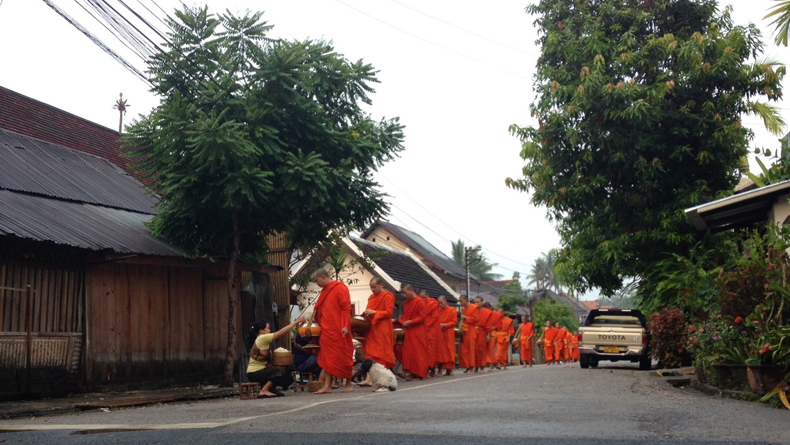
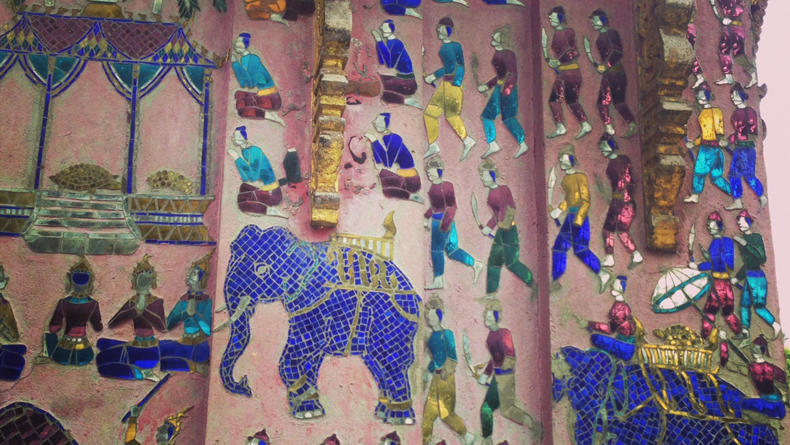

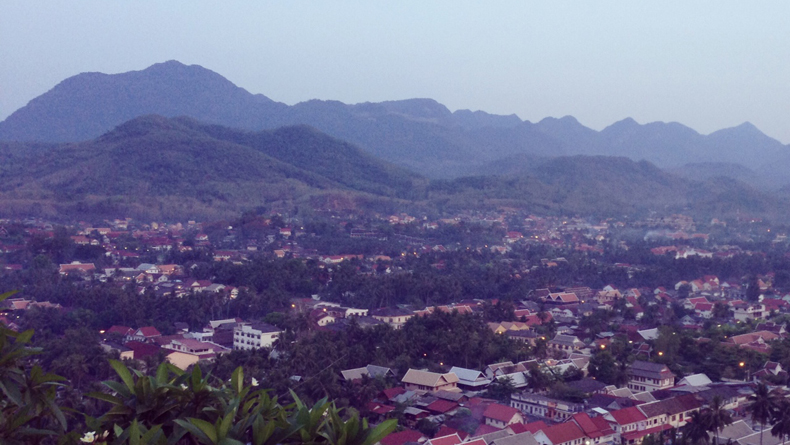
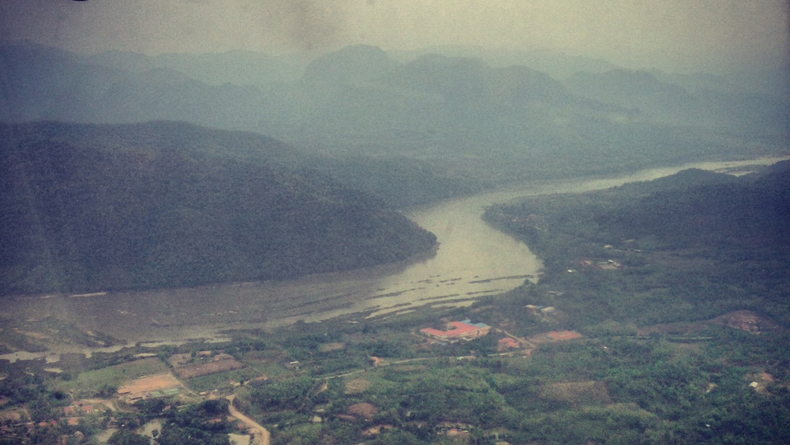
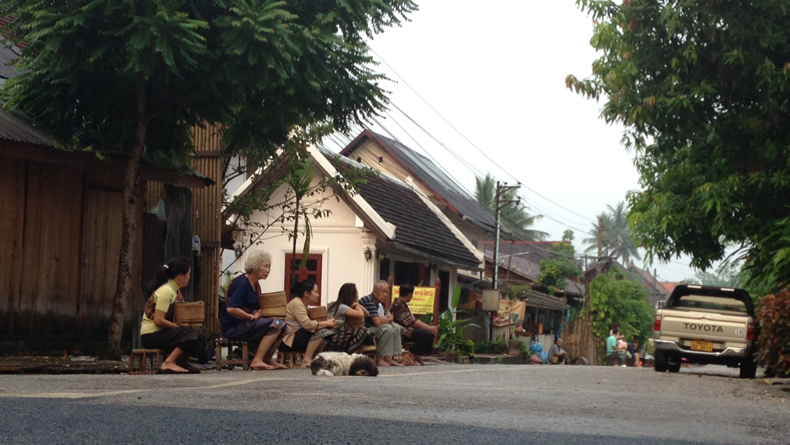








Leave a Reply